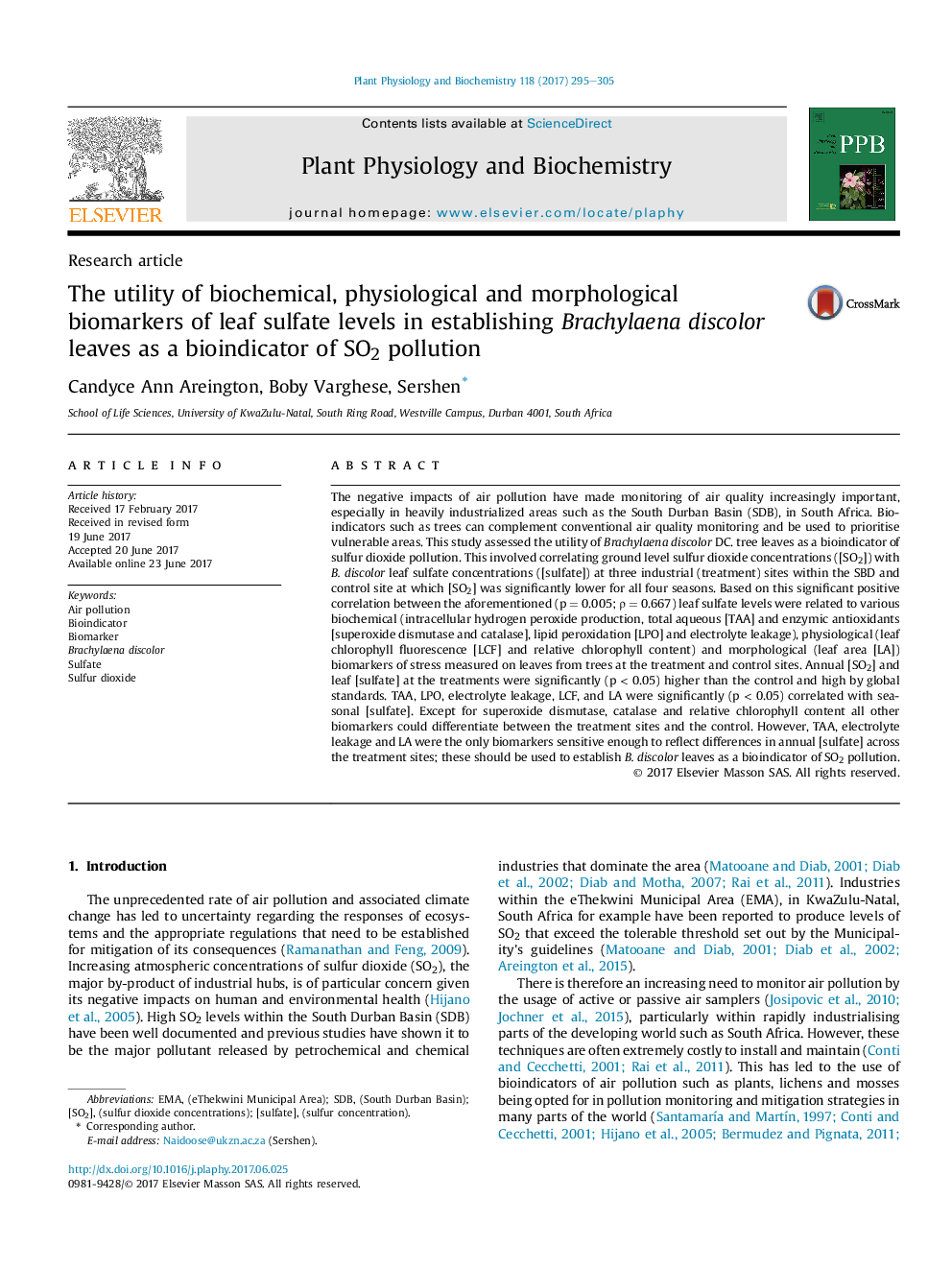| Article ID | Journal | Published Year | Pages | File Type |
|---|---|---|---|---|
| 5515445 | Plant Physiology and Biochemistry | 2017 | 11 Pages |
â¢Sulfur dioxide levels in the South Durban Basin are high by global standards.â¢Leaf sulfate concentrations can serve as an indicator of SO2 pollution.â¢Six biomarkers of plant stress were correlated with leaf [sulfate].â¢Total aqueous antioxidants, electrolyte leakage and leaf area were ideal biomarkers.â¢Brachylaeana discolor leaves can serve as a bioindicator of SO2 pollution.
The negative impacts of air pollution have made monitoring of air quality increasingly important, especially in heavily industrialized areas such as the South Durban Basin (SDB), in South Africa. Bioindicators such as trees can complement conventional air quality monitoring and be used to prioritise vulnerable areas. This study assessed the utility of Brachylaena discolor DC. tree leaves as a bioindicator of sulfur dioxide pollution. This involved correlating ground level sulfur dioxide concentrations ([SO2]) with B. discolor leaf sulfate concentrations ([sulfate]) at three industrial (treatment) sites within the SBD and control site at which [SO2] was significantly lower for all four seasons. Based on this significant positive correlation between the aforementioned (p = 0.005; Ï = 0.667) leaf sulfate levels were related to various biochemical (intracellular hydrogen peroxide production, total aqueous [TAA] and enzymic antioxidants [superoxide dismutase and catalase], lipid peroxidation [LPO] and electrolyte leakage), physiological (leaf chlorophyll fluorescence [LCF] and relative chlorophyll content) and morphological (leaf area [LA]) biomarkers of stress measured on leaves from trees at the treatment and control sites. Annual [SO2] and leaf [sulfate] at the treatments were significantly (p < 0.05) higher than the control and high by global standards. TAA, LPO, electrolyte leakage, LCF, and LA were significantly (p < 0.05) correlated with seasonal [sulfate]. Except for superoxide dismutase, catalase and relative chlorophyll content all other biomarkers could differentiate between the treatment sites and the control. However, TAA, electrolyte leakage and LA were the only biomarkers sensitive enough to reflect differences in annual [sulfate] across the treatment sites; these should be used to establish B. discolor leaves as a bioindicator of SO2 pollution.
